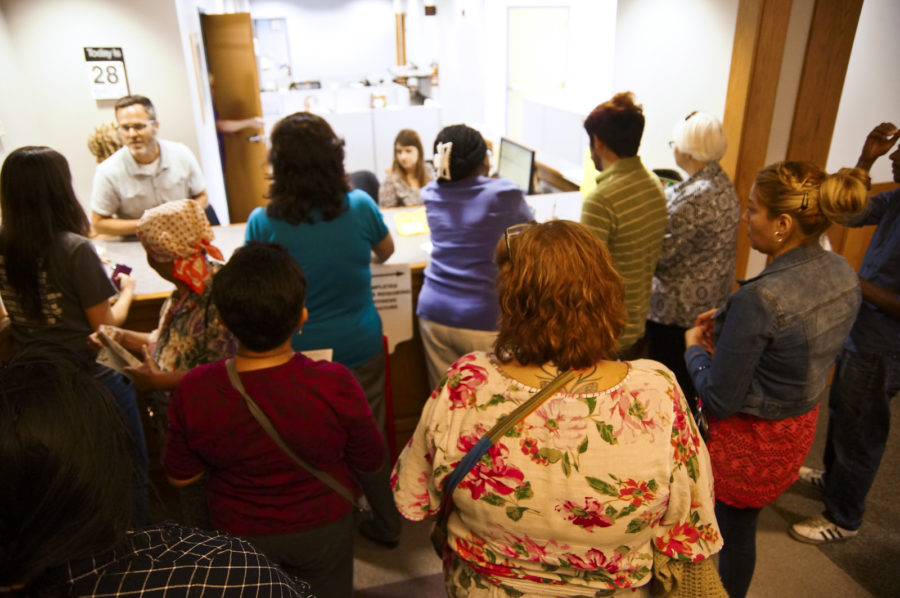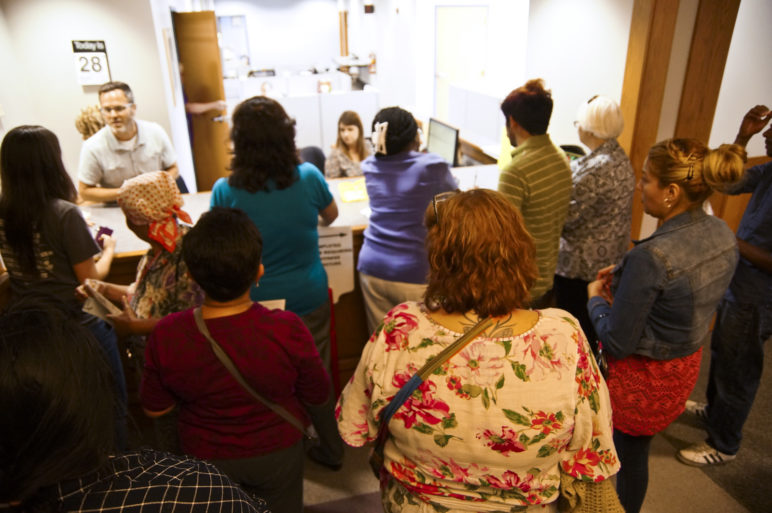This is part three in a four article series about how voters respond to ranked ballots and proportional voting systems. You can read the other articles in this series here: Part 1, Part 2, and Part 4. This article was also updated and revised from an earlier version for clarity.
Would switching from a familiar “vote for one” ballot to a fairer ballot (albeit a less familiar one, for most North American voters) disenfranchise voters? Would an unfamiliar ballot intimidate voters into staying away on election day, or cause them to make errors that would disqualify their vote, or count them out in some round of voting? That’s what I’ve been trying to figure out in this series.
So far, the news has been good or neutral for switching to fairer ballots. In Part 1, I found that, when the system guarantees voters better representation, even if it does so through a less-familiar multi-winner cumulative ballot or ranked ballot, more people turn out to vote. In Part 2, I found that, on the one hand, voters are slightly more likely to make an error filling out a ranked ballot (error rates are less than 1 percentage point higher compared to pick-one, plurality elections), but on the other hand voters are more likely to vote in the ranked races than in plurality races. The two trends balance each other out and overall, about the same number of voters cast a valid vote in ranked races as in plurality.
But it turns out we are only now getting down to the big impacts on voter participation in Part 3. Voter turnout and voter error are microscopic factors compared to the much larger impact of whether each voter has a say in each round of ballot counting. Academics sometimes call this “continuity in voter participation,” which is a little wordy, so I’ll just ask whether voters weigh in on all rounds of an election, or only some.
Does each voter participate in each round of voting?
In plurality voting, there are often two elections, or two rounds of voting—usually a primary and then a general election, or sometimes a general election and then a runoff. Many voters participate in just one round of voting—usually the general—and not in the primary or runoff round. It’s not unusual for less than one-quarter of voters to participate in primaries, meaning the vast majority of voters had no say in that round of voting. In Oregon, primaries are closed, meaning only voters registered with a major party can participate. This system actively excludes the nearly half of Oregon voters who don’t affiliate with either of the two major parties from the primary round in partisan races.
A ranked election works differently. It combines the two rounds into a single election and lets voters rank the candidates in order of preference. The votes are counted in rounds, just like a primary and general, with candidates getting eliminated in each round. But if a voter doesn’t give a rank to either of the two final candidates, that voter’s ballot is “exhausted” and doesn’t count in the final round. It’s as if that voter cast a ballot in the general, but didn’t show up to vote in the runoff round between the final two.
More voters participate in all rounds in RCV than in plurality elections
Many voting theorists have raised concerns that RCV elections could have high ballot exhaustion rates because voters won’t rank enough candidates to have a vote in each round of counting. This could mean that a winning candidate in a ranked race does not have support from a majority of voters because not all ballots count in the final stage of counting. But, RCV elections that combine the primary and general empower astronomically more voters to participate in all rounds of voting compared with the dismally low rates of voter participation in primaries and runoff rounds.
Voter drop-off is a measure of how many voters cast a valid vote in the highest turnout round of an election versus all rounds of the election. It combines all factors that can influence voter participation in an entire election cycle. In a ranked-choice election voter drop-off can occur through under- and overvoting, as well as via ballot exhaustion when voters don’t rank any of the final candidates. In a plurality election, voter drop-off counts under- and overvotes, as well as exhaustion via voting in one, but not all stages of an election (for example, voting in the general but not the primary or run-off).
A study comparing rates of voter drop-off in 8 US RCV cities with that in 21 matched plurality cities showed that RCV was associated with a 24 percentage point reduction in voter drop-off compared with plurality elections that required a two-round election process. Though a small portion of RCV’s boost came from more voters participating in down-ballot RCV races, the overwhelming cause was that the ranked ballot gave more voters a say in every round of the election via just one ballot, whereas plurality voters only participated in the general, not the primary nor the runoff.
Voters are more likely to rank a second choice than to turn out and vote a second time
San Francisco’s 2005 ranked-choice Assessor-Recorder election serves as a great example. No candidate received a majority of votes in the first round of vote counting in the November general election. Without RCV this election would have been decided in a December runoff, elections that had long suffered from abysmal turnout. But, since the city had adopted RCV the previous year, voters had the opportunity to indicate their second choice on their November ballot, circumventing the need for the second election. As a result of the streamlined election process, around 118,000 more voters had a say in the final winner of the race via their second choice votes than likely would have had the race gone to a December ballot. That estimate is based on comparisons with turnout in San Francisco’s December runoffs for similar races in past years. In other words, thanks to RCV, the city saw a 168 percent increase in the number of votes that decided the final winner of the Assessor-Recorder race.
Even with the small uptick in ballot errors, RCV gives many, many more voters a chance to use their voice in democracy.
Ballot exhaustion decreases when voters make use of their rankings
Voters who use more of their available rankings are less vulnerable to ballot exhaustion than those who use only one or two rankings. By ranking multiple candidates, voters increase the chances that their ballots will reflect their preferences regarding one of the final candidates in the race, even if their top choice candidate is eliminated in an early counting round.
A variety of factors influence whether a voter will choose to use her available rankings, and these change depending on other factors in an election. Race competitiveness appears to have the greatest influence on whether a voter will use more than one of her rankings. Intuitively, voters should also begin to use more of their rankings over time as they get more comfortable with ranked voting, but as of yet no data show a clear trend in this direction.
There are also no clear patterns regarding how voters of different racial or ethnic groups use their ability to rank. For example, in San Francisco’s first RCV election in 2004 non-Hispanic, White voters were more likely to rank three candidates than any other racial or ethnic voter group. But the next year, in 2005, White voters were the least likely group to rank three candidates. Similarly, in 2004 native English speakers were slightly more likely to rank three candidates than were native speakers of any other language (60 percent versus 51-54 percent). But in 2005 native English speakers were the least likely language group to rank three candidates (54 percent) while native Spanish and Chinese speakers were more likely (67 and 65 percent, respectively) , and native speakers of all other languages were the most likely to rank three candidates (81 percent).
Even with ballot error, RCV gives more voters a voice
Though ballot exhaustion can happen in ranked-choice elections, it’s far less common than voter drop-off in two-round elections. Ranked-choice ballots are one of the most powerful tools available for anyone who cares about voting rights and increasing voter participation. They can streamline the election process and do away with one of the biggest sources of voter disenfranchisement: low-turnout elections. As a result, they give voters a real chance to have their candidate preferences influence a final election outcome. These factors together cause the number of voters who have a voice in all stages of an election to skyrocket compared with pick-one, plurality ballots.
Advocates looking to combat voter disenfranchisement often work within the existing plurality system. But voting method reform is what can cut to the heart of barriers that stifle voices in our democracy.











Vernon Huffman
Thanks for this insightful analysis. I like Racked Choice Voting because it eliminates the spoiler effect and gives third parties a chance. I think it is the ideal way to choose in a race for an executive position.
That said, I prefer Proportional Representation for choosing legislators. This allows minority viewpoints to be represented throughout the session. A legislature that is proportionally representative, where no one party or coalition holds a majority has an incentive to be more civil than a two party system.
Kristin Eberhard
Vernon – we completely agree with you that PR is best for legislative bodies! http://www.sightline.org/2017/05/18/sightlines-guide-to-methods-for-electing-legislative-bodies/
Robert Bristow-Johnson
Vernon (and Margaret and Kristen at Sightline),
It is not always true that RCV eliminates the “spoiler effect”. It might if the RCV was decided using Condocet-compliant tallying rules and the “Pairwise-champion” is elected, but in Burlington Vermont in 2009, we were using Instant Runoff Voting (which is generally what promoters of RCV intend) and we had **exactly** the spoiler effect and a component of the voters were punished simply for marking their favorite candidate #1 on the ranked ballot.
Somehow, sometime, we have to stop accepting everything that Rob Ritchie and Fairvote says as unchallenged truth. RCV need not be synonymous with IRV. And IRV does not always elect the majority-preferred candidate nor always avoid the spoiler effect.
I wish that advocates for voting reform (and we **need** voting reform in this country desperately) would learn the difference between the concepts of Ranked-Choice Voting and the various methods of tallying the vote of which IRV is only one method. Two other crappy methods is Borda count and Bucklin. Only a Condorcet-compliant method reflects the majority will and is immune to spoilers (in normal circumstances where voters express their sincere preference in their vote).
Kristin Eberhard
Robert – I agree that using Ranked-Choice Voting as an umbrella term can sometimes be confusing. In this series, we are discussing the impacts of a different ballot (ranked or cumulative) on voters’ ability to understand and participate, rather than on how the counting of the ballots works. But we are aware that there are different ways to count ranked ballots.
See
http://www.sightline.org/2017/05/09/glossary-of-executive-officer-voting-systems/
and
http://www.sightline.org/2017/05/18/glossary-of-methods-for-electing-legislative-bodies/
Robert Bristow-Johnson
Kristen, I have only now discovered your response.
I mean this respectfully, but you still miss the point, your two references make absolutely no reference to Condorcet-compliant methods such as Tidemen Ranked-Pairs or Schulze method. I think that you still don’t “get it”.
Ranked-choice voting (RCV) unfortunately is always conflated with Instant Runoff Voting (IRV, or sometimes “STV” for Single Transferable Vote) and IRV *fails* when the top three candidates are all roughly equal in support. IRV can only be guaranteed to work in preventing a spoiler effect only when the potential spoiler is *not* a plausible winner. In 2009 in Burlington Vermont, we had IRV and we had a spoiled election and people *knew* that it was spoiled. Contrary to what was promised, IRV punished a large group of voters simply for marking their favorite candidate #1. This is clear in Warren Smith’s Burlington-election webpage.
Please look into and *show* evidence that you have looked into what a Condorcet-compliant RCV election is about and how that is better than IRV. So far, all I can tell, Kristin, is that you’re still not “getting it”. None of those links you refer to say anything about Condorcet or electing the Pairwise Champion.
Thank you.
Robert Bristow-Johnson
Please take a look at this paper:
The Failure of Instant Runoff Voting to accomplish the very purpose for which it was adopted: An object lesson in Burlington Vermont
This is now, again, a hot topic in Vermont with the re-emergence of a push for RCV from FairVote and VPIRG.